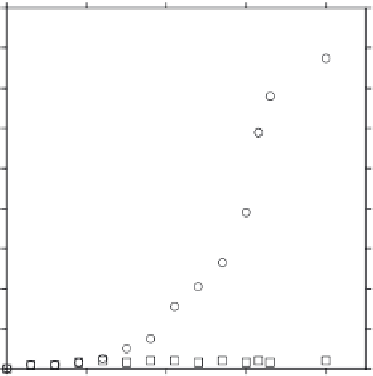Environmental Engineering Reference
In-Depth Information
+Osorb
+Triclosan
1.6
Control
1.2
0.8
0.4
-Osorb
+Triclosan
0.0
0
100
200
Time (min)
300
400
FIGURE 33.10
Bacterial cell (ampicillin-resistant DH5 [alpha]
E. coli
) growth over time at three different conditions: control LB
media; LB media + 100 ppb of triclosan; and LB media + 100 ppb of triclosan + 3 g (0.3% w/v) of Osorb.
(Figure 33.10). The results indicate that Osorb protects bacteria by capturing and inactivating
biocides from the media. Since the roles of microbial community in bioretention systems are
substantial for pollutant removal, the results of bacterial growth suggest that the Osorb-
metal composites have the potential to protect and facilitate bacterial community from toxic
biocides and improve overall soil health and performance of bioretention systems.
33.14 Conclusions
New Osorb-metal composites have been initially batch, column, and ield scales for
enhanced remediation of runoff pollutants in bioretention systems with good, consistent,
and commercially viable results. The materials are highly effective at removing multiple
runoff pollutants, including nutrients (i.e., nitrate and phosphate), herbicide (i.e., atrazine),
and pharmaceuticals (i.e., ethinylestradiol and triclosan).
One of the key factors to successful remediation of runoff pollutants in bioretention sys-
tems is maintaining consistent hydraulic and pollutant removal performance in the long
term due to the excessive runoff volume and pollutant loads over time. Results obtained
from column- and ield-scale experiments have shown that the use of Osorb-metal com-
posites in bioretention systems has the potential to simultaneously capture and remove
multiple runoff pollutants such as motor oil, nitrate, phosphate, atrazine, and estradiol
through enhanced physicochemical absorption and reductive transformation with excel-
lent hydraulic performance. The ongoing effectiveness of Osorb-metal composites in ield-
scale bioretention systems is currently being evaluated in the long term. Future work is
also focused on modiication of Osorb-metal composites to maximize longevity of reme-
diation capacity over time.


















